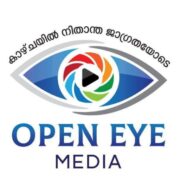Swimming activities at beaches and pools have become a popular and enjoyable way for kids to cope with the scorching heat. However, toxics watchdog BAN Toxics reminds the public to exercise extra caution when buying and using unnotified Toys and Child Care Articles (TCCA) that may contain restricted harmful chemicals, such as phthalates, in kiddie plastic swimming toys.
In a recent market monitoring, the group found numerous stores in Metro Manila selling kiddie swimming toys and floaters priced between P50 and P200, some of which were improperly labeled.
In 2011, the Department of Health (DOH) issued Administrative Order No. 2009-0005-A to regulate the use of phthalates in children’s toys in the country. The order prohibits any person from manufacturing for sale, offering for sale, distributing in commerce, or importing into the country any children’s toy that contains a concentration of more than 0.1 percent of di-(2-ethylhexyl) phthalates (DEHP), dibutyl phthalate (DBP), or benzyl butyl phthalate (BBP).
The AO further prohibits diisononyl phthalates (DINP), diisodecyl phthalate (DIDP), and di-n-octyl phthalate (DnOP). Phthalates are primarily used in plastic products as plasticizers and are the most commonly used chemical additive in toys. They serve as softeners, stabilizers, and colorants; improve elasticity; and enhance durability. Phthalates are chemical compounds primarily used to increase the flexibility and durability of plastics like plasticized Polyvinyl Chloride (PVC).
Citing information from the Environmental Working Group, phthalates are a class of chemicals with endocrine-disrupting properties. These chemicals are associated with health harms, including increased risk of cancer, asthma and allergies, and learning, attention, and behavioral difficulties in children.
“Our monitoring shows that manufacturers and distributors of swimming toys and floaters are not fully aware of the existing regulations in the country, thus compromising children’s health and safety due to exposure to toxic chemicals,” said Thony Dizon, Toxics Campaigner of BAN Toxics.
“The entry of restricted toys with toxic additives must be prevented, especially if we already have laws in place to protect against the use of toxic chemicals in children’s products,” the group explained.
Last year, the group published a study highlighting the public health and environmental risks posed by toxic plastic toys. Of the 257 samples, 161 toys (62.64%) showed chemical levels exceeding safety standards and failed to meet basic regulatory requirements, such as proper ingredient labeling and warning labels. All the toys had incomplete labeling, despite the existing law (Toy and Game Safety Labeling Act).
BAN Toxics urges the national government to prioritize the enactment of the “Safe and Non-Hazardous Children’s Products Act” to ensure the safety of children against toxic chemical additives in plastic toy products.
BAN Toxics also urges regulatory agencies such as the Food and Drug Administration (FDA) and the Department of Trade and Industry (DTI) to conduct post-market surveillance and confiscate unlabeled and unnotified toys and child care articles (TCCA) from the market. #
References:
https://www.fda.gov.ph/wp-content/uploads/2021/05/Administrative-Order-No.-2009-0005-A.pdf
https://www.ewg.org/news-insights/news/2024/09/what-are-phthalates
